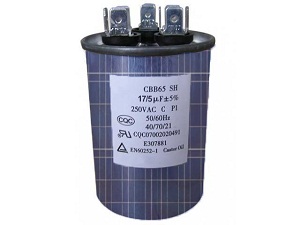Rensselaer Polytechnic Institute wins $2 million grant
 One of the largest issues facing renewable energy is what to do when the sun’s not shining and the wind’s not blowing.
One of the largest issues facing renewable energy is what to do when the sun’s not shining and the wind’s not blowing.
There are choices, like using non-renewable generation from fossil-fuel powered or nuclear power plants, and then there’s storage. The problem with the former is pollution and waste, the problem with the latter is a long-term reliable solution.
But New research at the Rensselaer Polytechnic Institute in New York is aimed at developing a solution. Researchers there are designing what promises to be an inexpensive capacitor-based energy storage device, capable of long-term charging and discharging capabilities on a large-scale, meaning the power from your solar panels can be used days after its generated.
The institute announced it was awarded a $2 million grant from the National Science Foundation to develop prototype ceramic-based nano-structured capacitors that use ceramics rather than electrochemical storage, which are found in current batteries and super-capacitor technologies.
The institute should have small, working prototypes by spring 2011, according to Doug Chrisey, the Rensselaer professor leading the project. The expectation is that the technology can then be ramped up to provide megawatts of energy storage, he explained.
“we’ll test [the capacitors] under a wide range of environments,” he said. The purpose is to make sure the technology is ready for larger deployments.
Unlike batteries, which need to charge up slowly and discharge energy slowly, capacitors are able to charge and discharge quickly. For instance, most camera flashes are powered by capacitors; the slow discharge of the battery is what causes the sometimes frustrating lag time between flashes. Current battery and capacitor technologies also are electrochemically based and degrade over time and cycling.
The new technology being studied at the institute “will be cycled through full power, up and down without any degradation and to do it very fast,” explained Chrisley. “Capacitors have a lot of power density that can be used for many applications, including DOD operations.”
“Our proposed capacitors will be smaller, lighter, and more efficient than today’s batteries, and with no moving parts, the capacitors should last forever,” Chrisey said in a press release. The nanostructured capacitor will consist of thin, composite layers of ferroelectric nanopowder and low-melting, alkali-free glass capable of withstanding high electric fields and discharging slowly without degradation.
This new approach to energy storage could further reduce for fossil-fuels.



